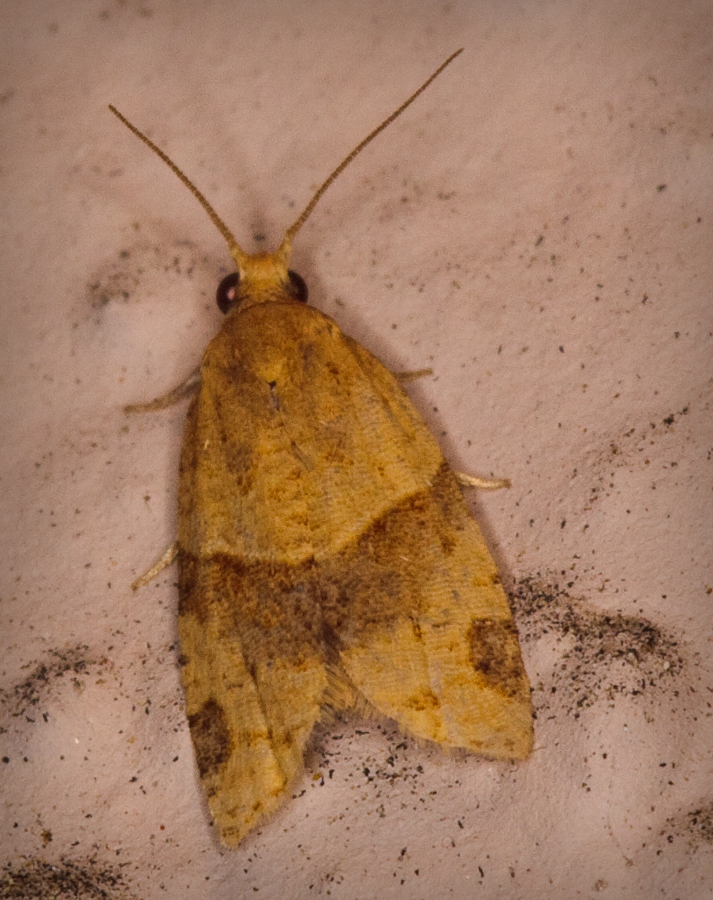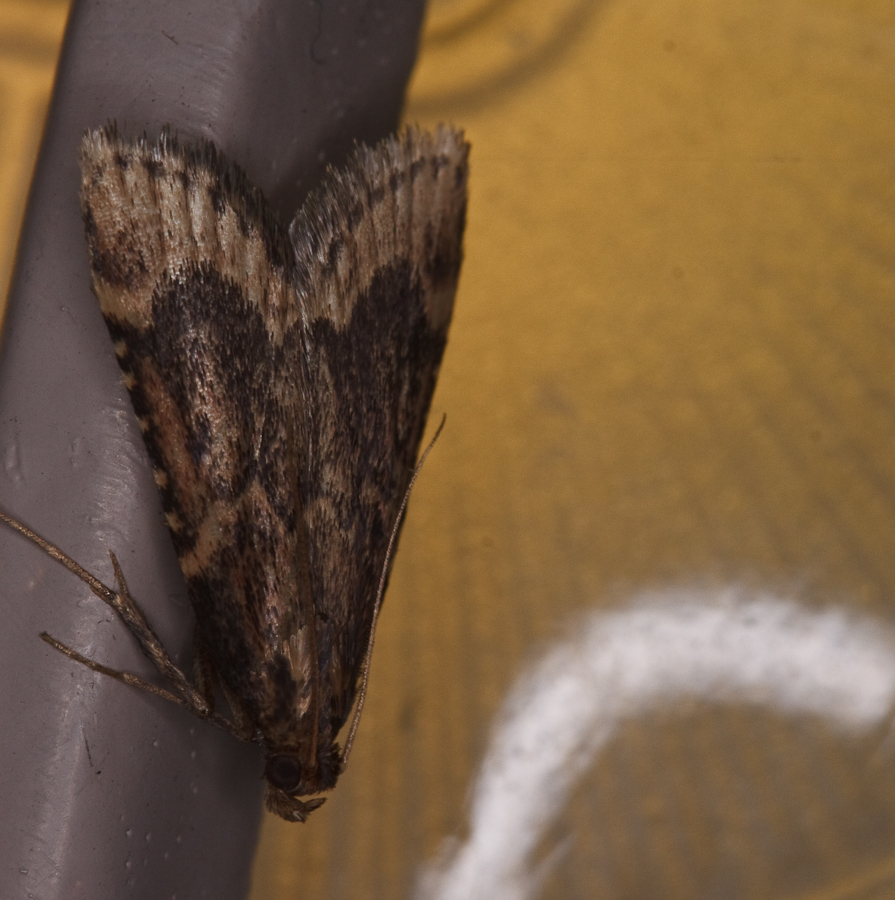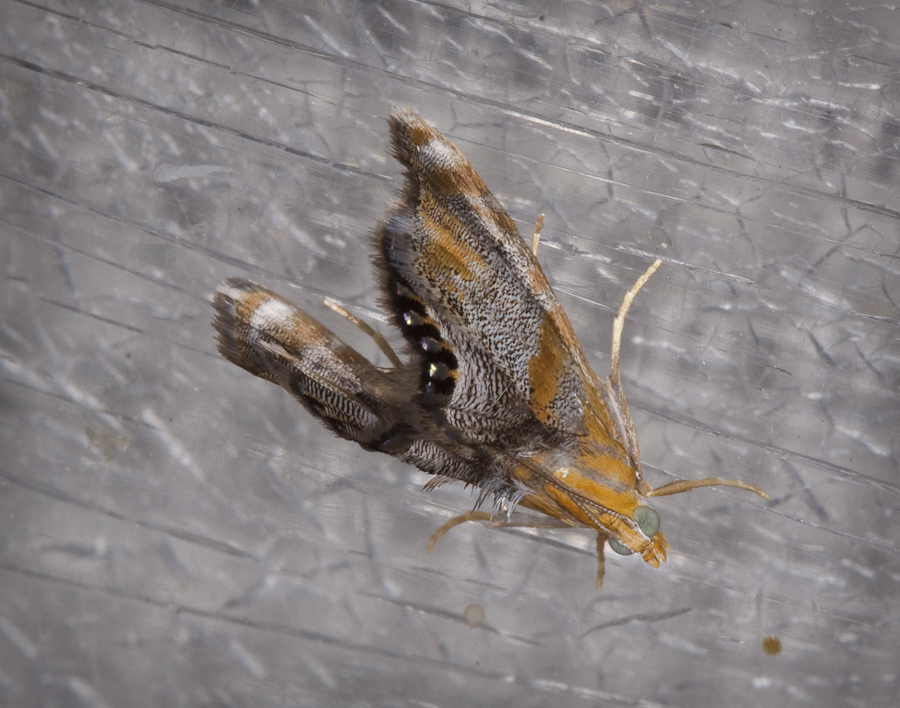Moth Monday: Garden Tortrix Moth
Monday, July 27th, 2009
Garden Tortrix Moth, Clepsis peritana, Hodges 3688
Irvine, CA, 2009-07
Today’s moth is a fairly commons species, and comes to light on my balcony fairly often; but it’s also relatively small at just over a centimeter. This photo is several times actual size. I didn’t get a decent photo of one until quite recently. It’s a pest of strawberry farms, and although Orange County is mostly paved over these days, there are still a few farms dotted around here and there including Tanaka Farms just a couple of miles down the road from me.
(more…)





